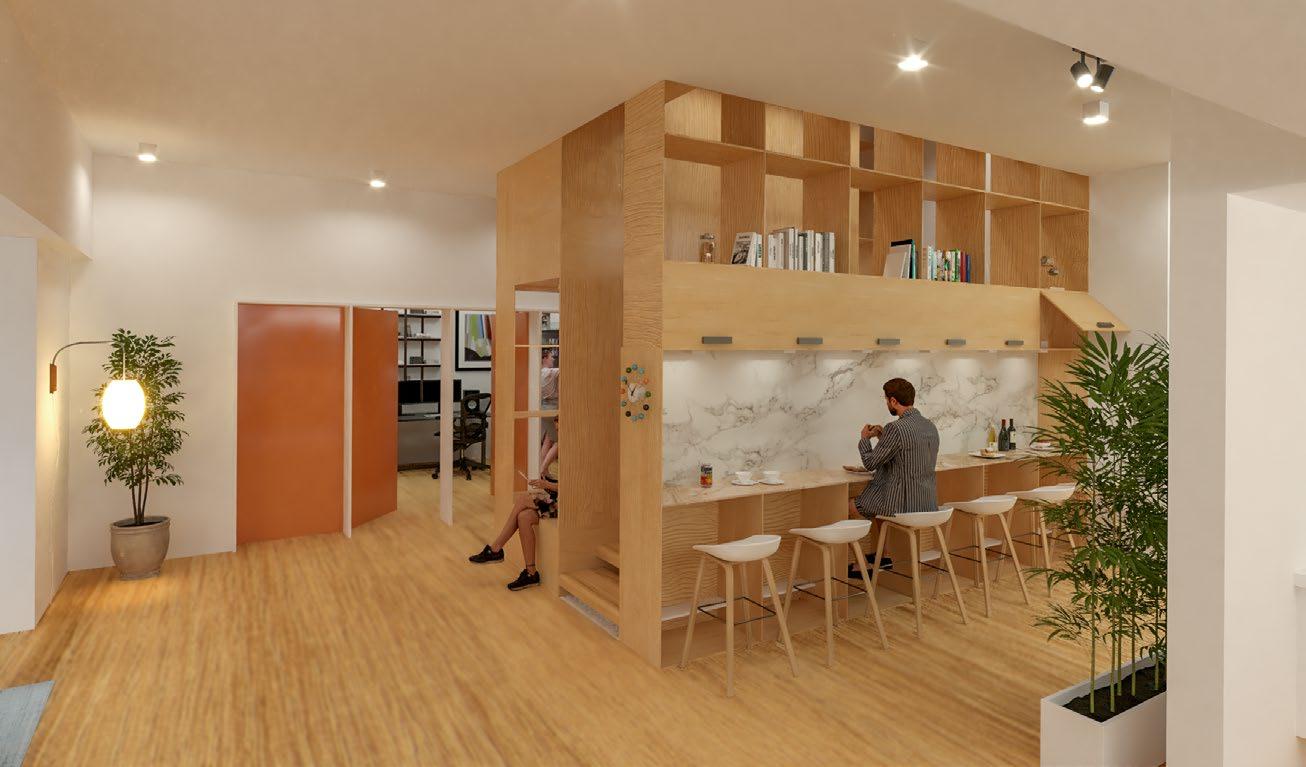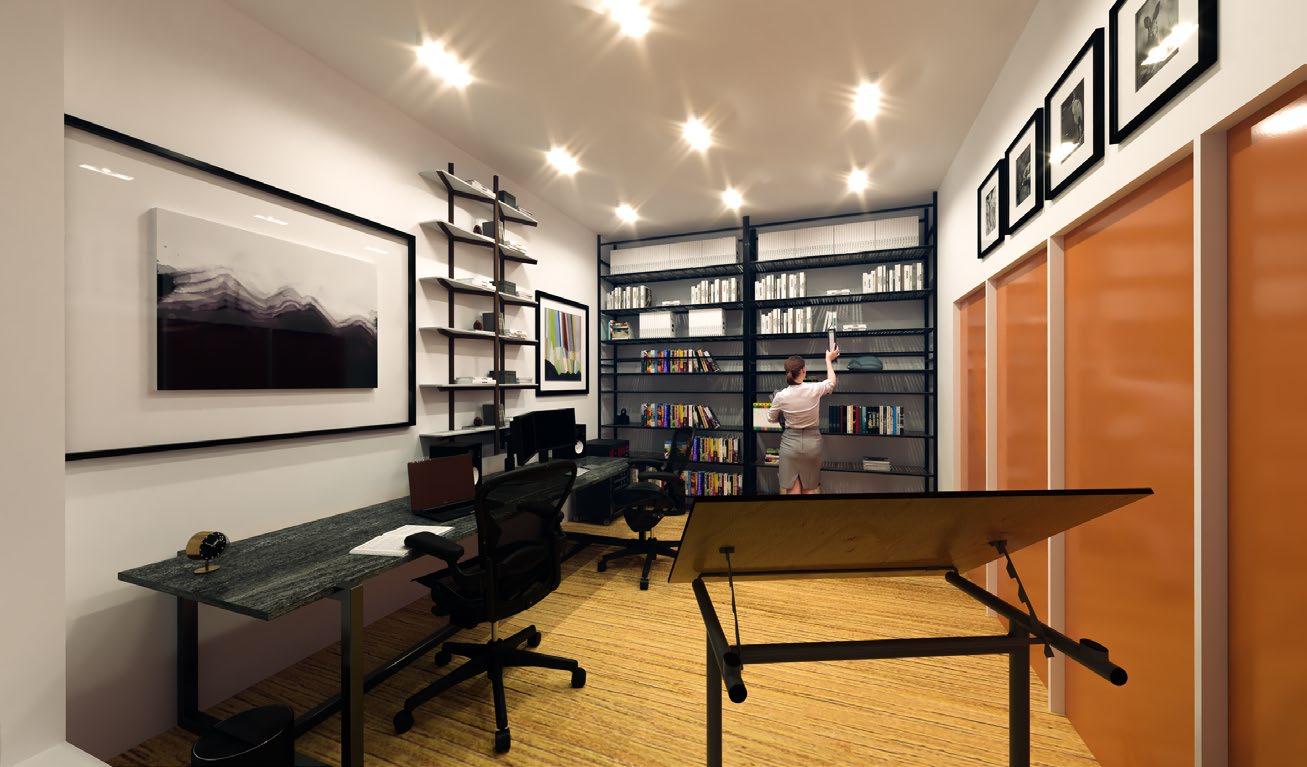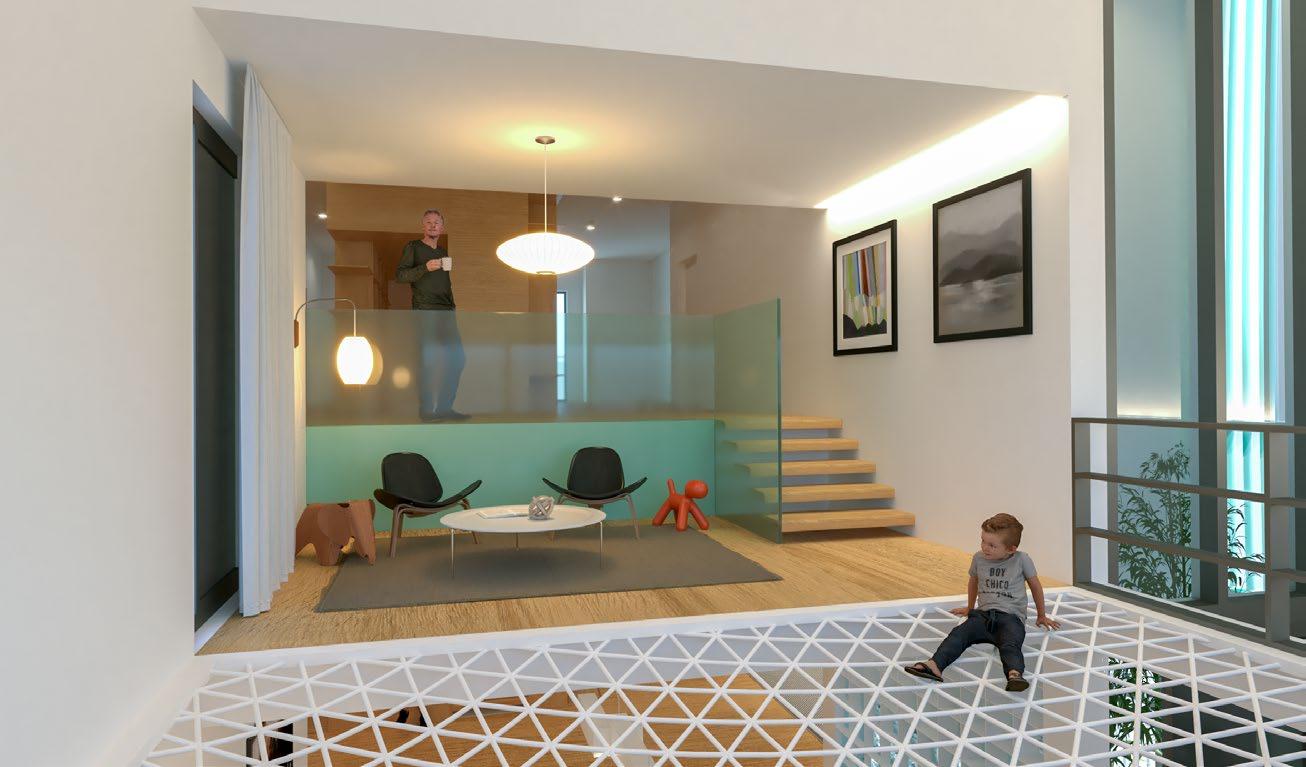
1 minute read
CASA RUSTICI
by Daniel Yi
NOTABLE ELEMENTS AND PUBLIC/PRIVATE GRADIENT
Second Floor First Floor Program
Advertisement
The rationalist design of Giuseppe Terragini’s Casa Rustici is most notably recgonized throughout the exterior design of the apartment building. The rationality follows through to the interior organization, where each program is separated via a tight circulation space, each walled off from one another. Our proposal seeks to remedy the physical separation between programs and homologate similar programs into one large open sapce.
Each of the programs that were once separated, now become seamlessly conjoined with one another. They are defined by the changes in furniture and by the sectional play of floorplates and ceiling heights. The clientle consists of a multigenerational family of six people; two grandparents, two parents, one eight-year old son, and one twenty-year old daughter who occassionally visits from university.
The family is altogether boasts an impressive creative repertoire, which became the primary inspiration for this unit. The grandma was a singer and vocalist, the grandpa a civil engineer. The mother attended art school and was formally trained as a creative, but not practices fine art and is an avid photographer. The father, also a creative, works in the music industry and a notable industrial designer. Three notable features facilitate the experience of the unit; the central staircase, the hammock floor, and the lightwell.
CIRCULATION STAIR WITH BUILT-IN FEATURES





